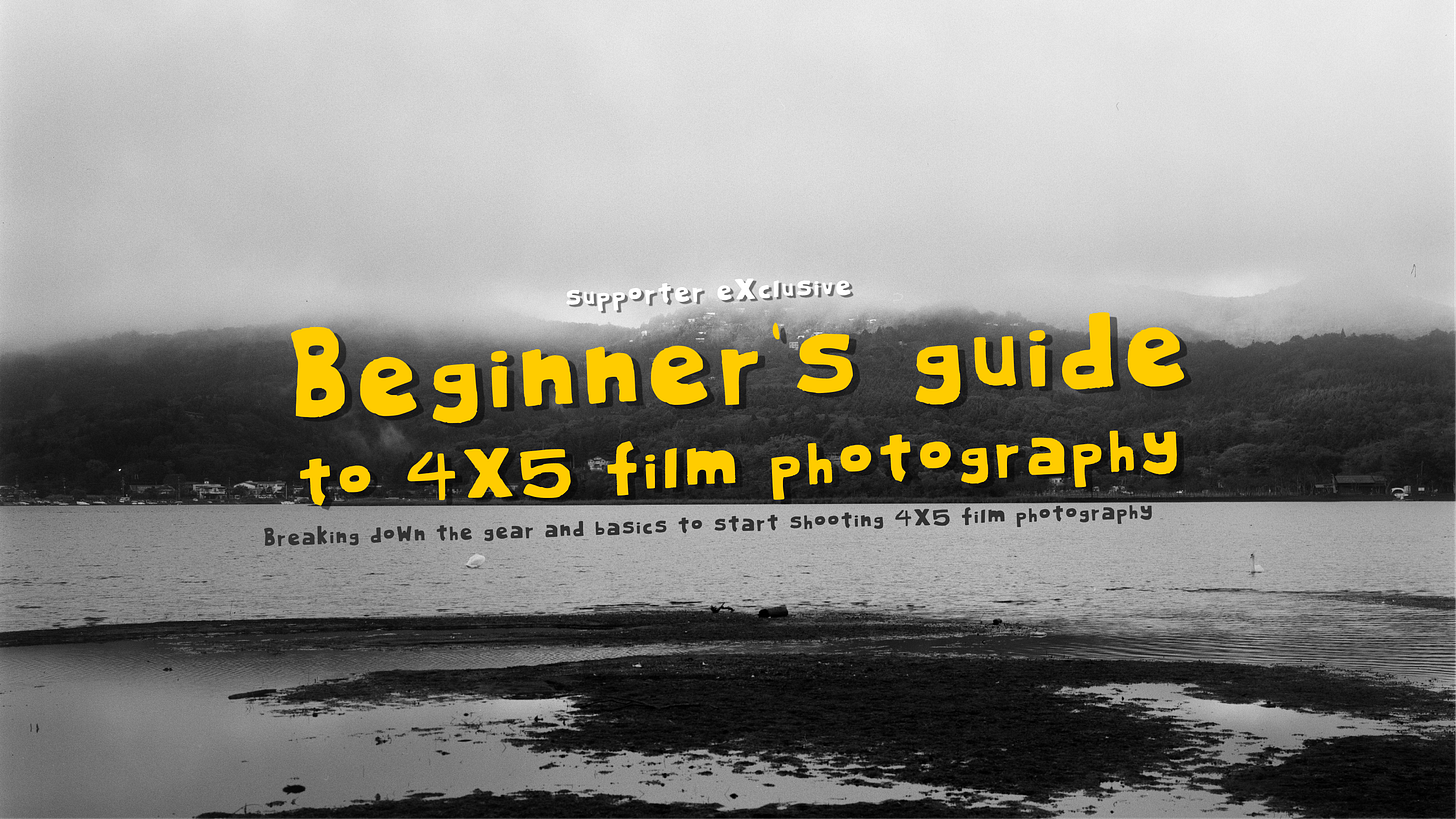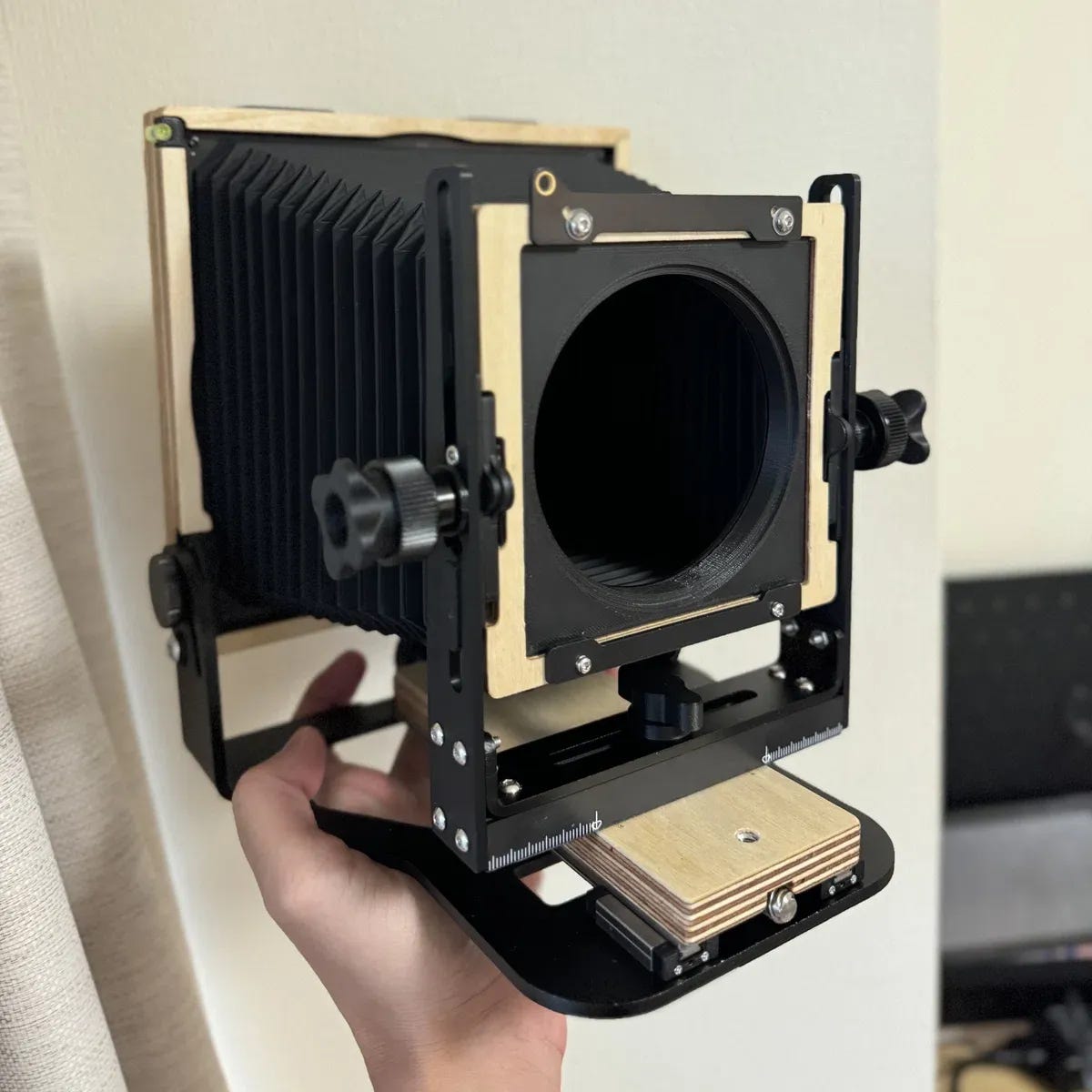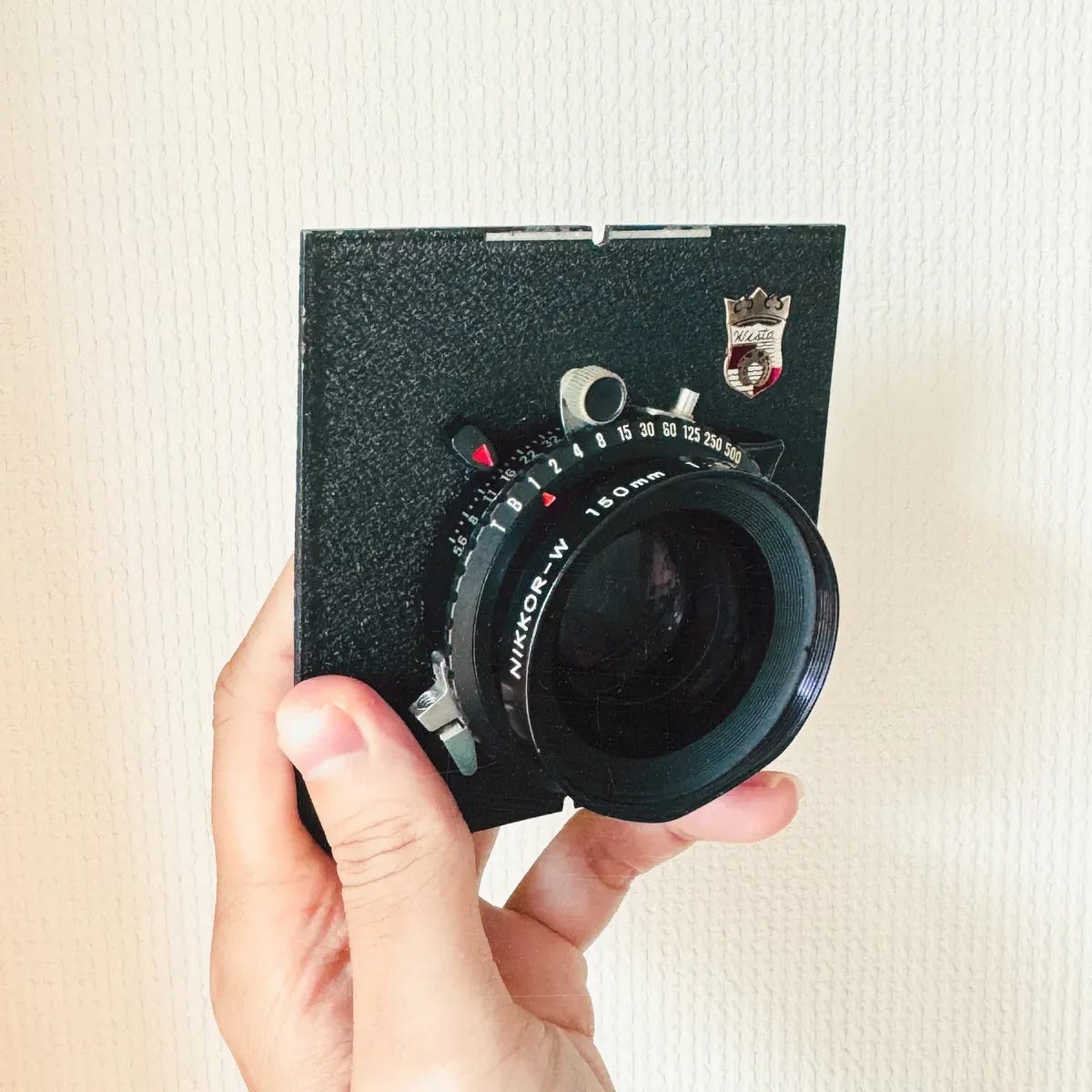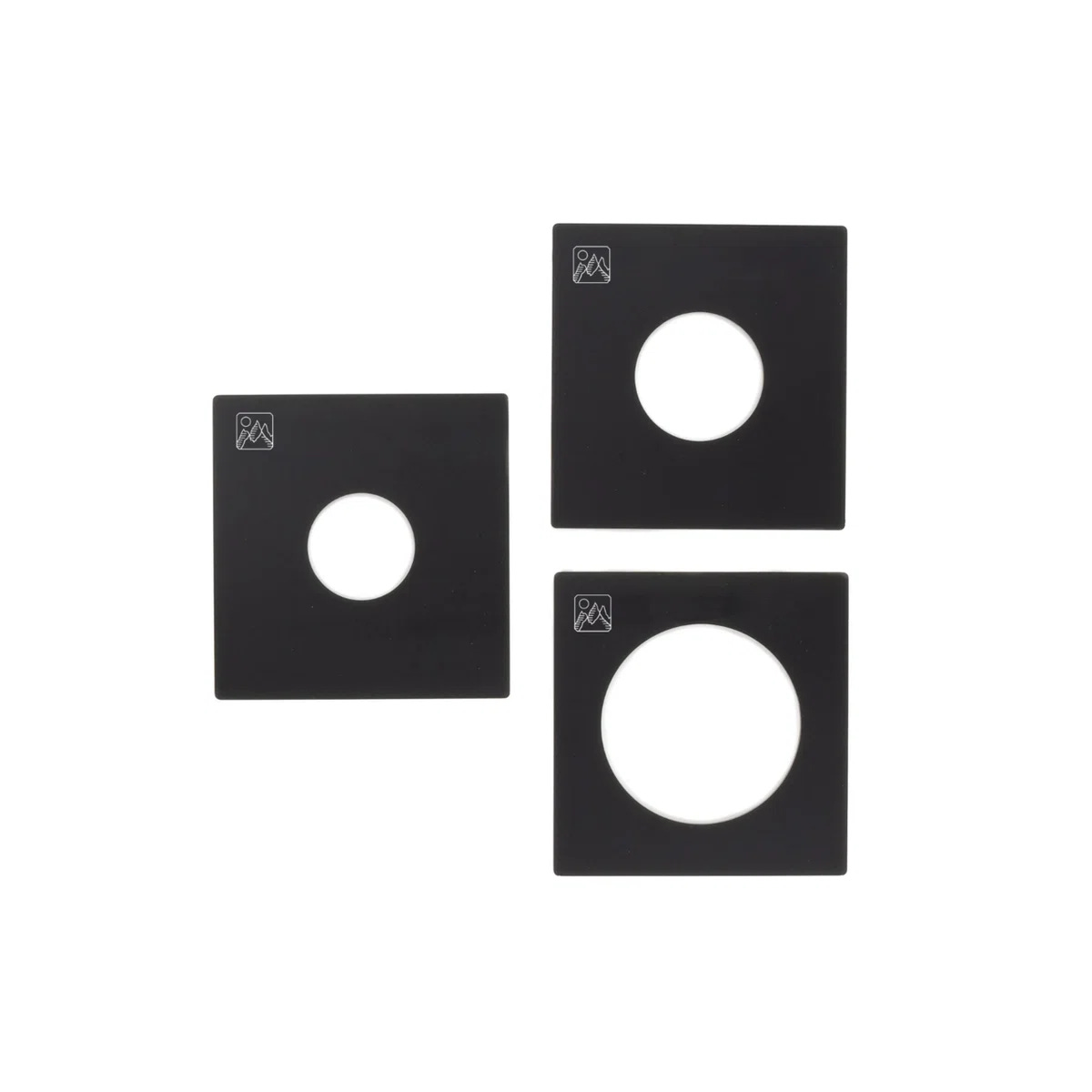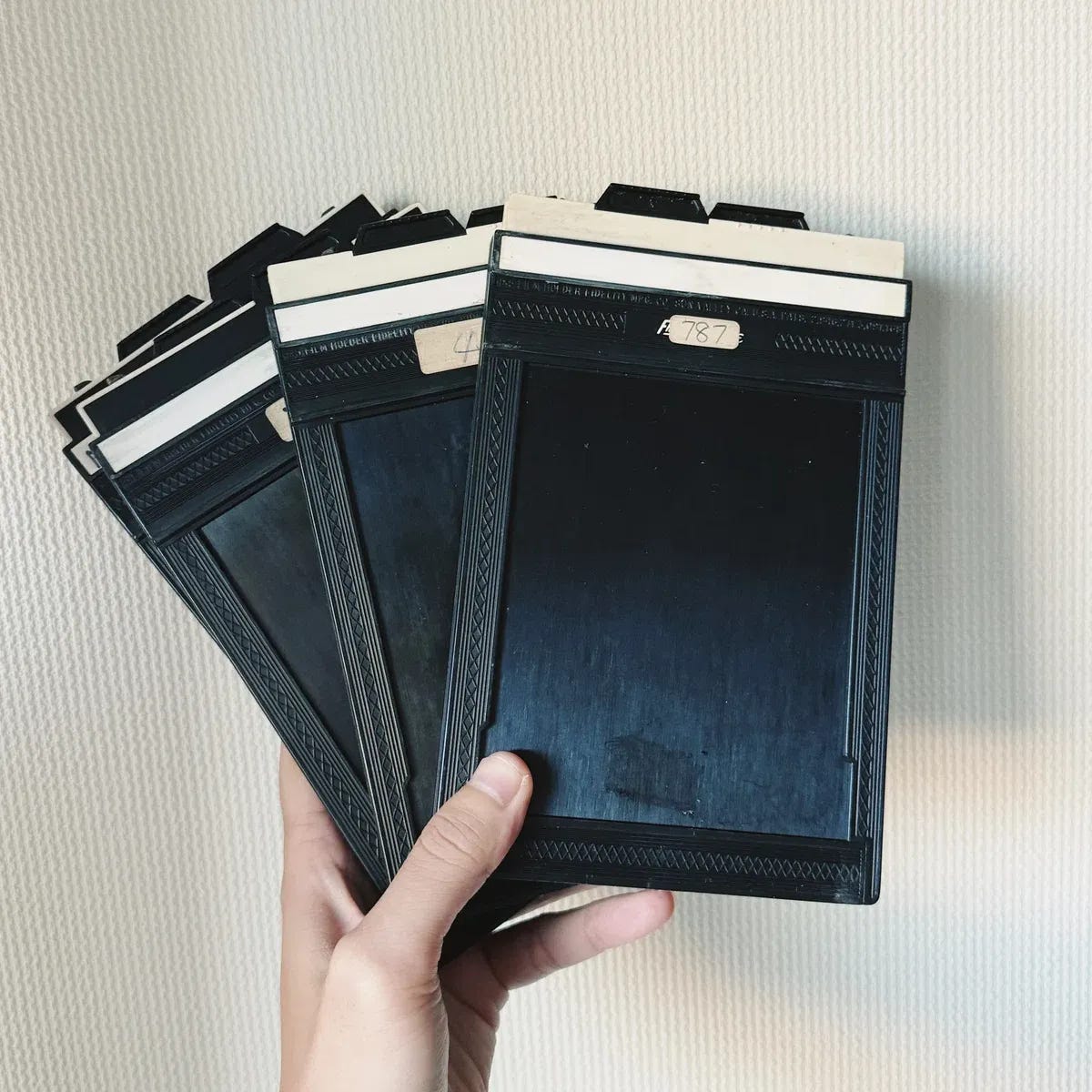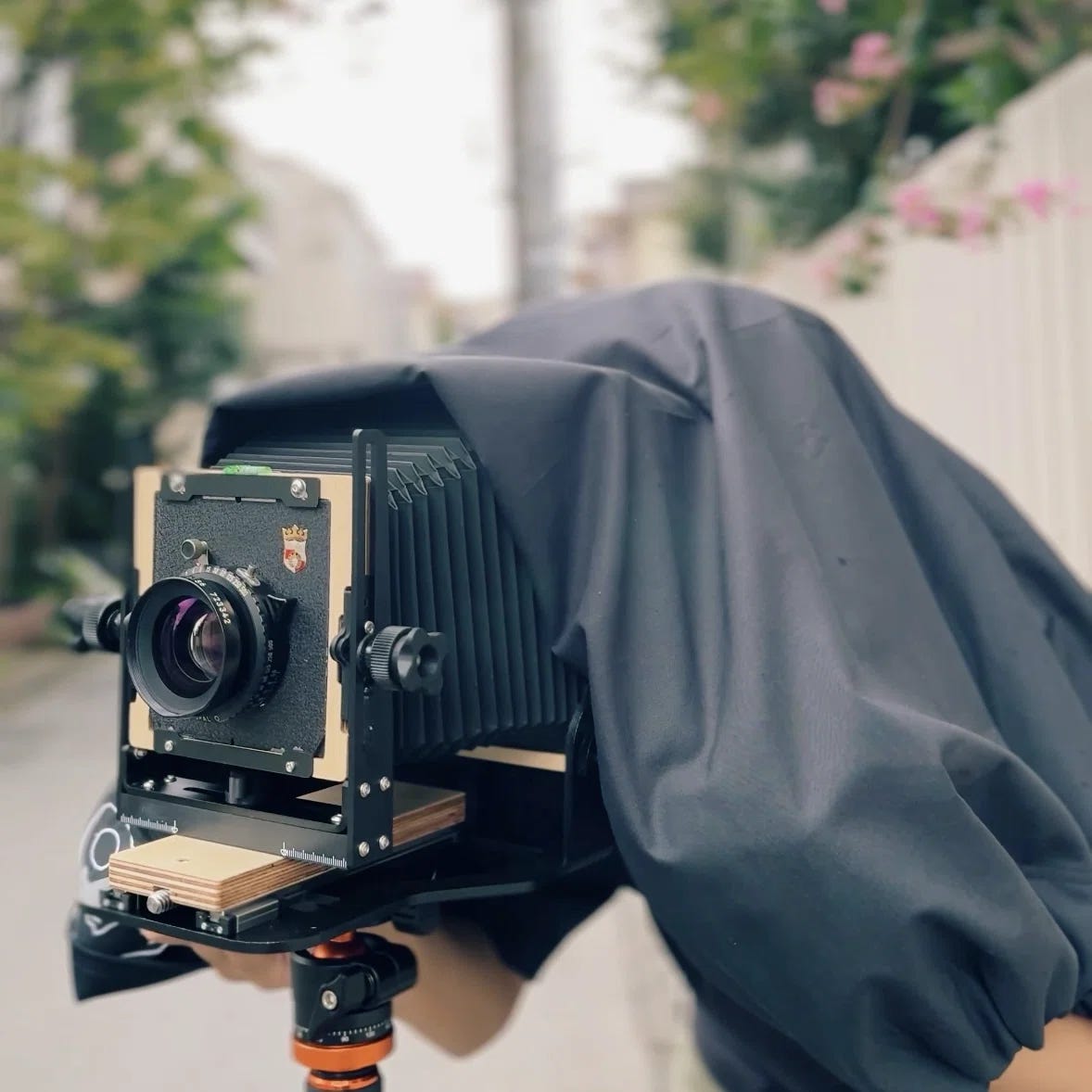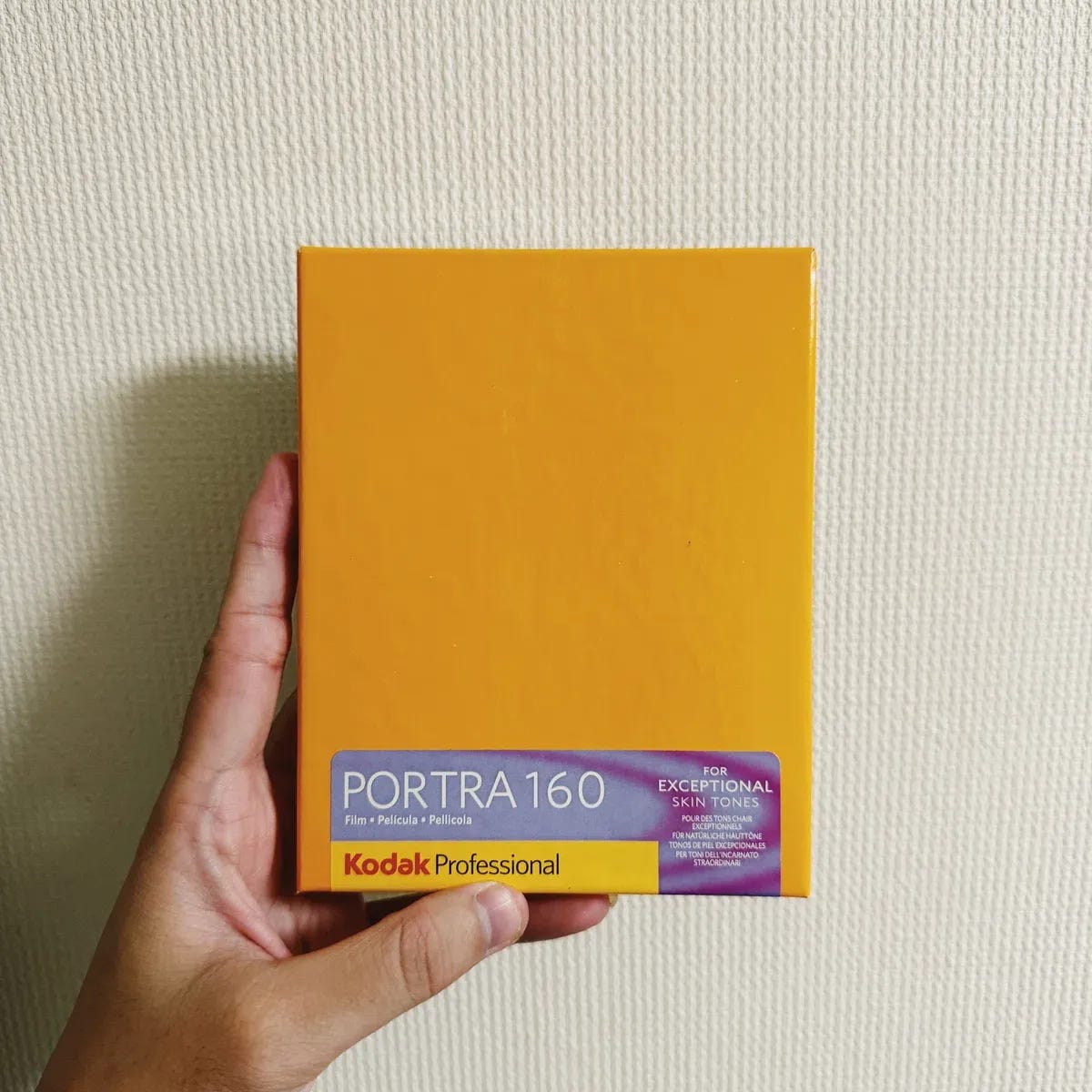Beginner's Guide to 4x5 Film Photography
Breaking down the gear and basics to start shooting 4x5 film photography
If you’re not a supporter, no worries, I open most content on this post so you’ll missed nothing. But if you decided to support, it truly means a lot! 🙇🏻♂️
I’ve been shooting film for about nine years now. 35mm, medium format, half-frame, TLRs, you name it. But this was actually my very first time diving into the world of large format. Honestly, I didn’t think I’d ever end up here (it always looked too intimidating and expensive), but here we are.
Back in August last year, I finally decided to dig into large format seriously: what gear you need, how to get started, and of course, how much money I’d have to say goodbye to (lol). In this post, I want to share the basic kit I put together and also some YouTube videos that really helped me along the way. Let’s dive in!
Camera Body
Large format cameras can get crazy expensive, so finding something that fits your budget is important. After a lot of comparing, I went with the Intrepid 4x5, and here’s why:
Super affordable. Probably one of the cheapest new 4x5 cameras out there.
Lightweight (only 1.3kg). Carrying a big wooden box around isn’t really my thing.
The Intrepid team is really responsive if you need help.
They also sell all the accessories you need in one place, which makes life easier.
Basically, it felt like the most beginner-friendly entry point into large format.
Lens
When it comes to lenses, most people recommend starting with 150–180mm, because that field of view is closest to the human eye. I managed to grab a Nikon Nikkor-W 150mm F5.6 off Yahoo Auctions for way less than Mercari or shop prices, definitely worth checking auctions if you’re patient.
Intrepid also suggested a few good starter lenses:
Nikkor W 150mm f/5.6
Schneider Apo Symmar 210mm f/5.6
Rodenstock Sironar 150mm f/5.6
Fujinon W 150mm f/5.6
Schneider Apo Symmar 150mm f/5.6
Honestly, I just wanted something reliable and not overpriced, and the Nikkor felt like a safe bet. Below list should help you choose a focal length close to a standard lens.
Lens Board
Here’s where large format feels different: you can’t just mount a lens directly to the body, you need a lens board. These come in different sizes (Copal 0, 1, 3), depending on the lens shutter. It sounds complicated at first, but once you match the right size, you’re good.
Film Holder
Large format uses film holders, and each one lets you load two sheets. I also got mine from Yahoo Auctions. Pro tip: always double-check they’re in good condition, otherwise you risk light leaks (and nobody wants that on a first try).
Changing Bag
If you are developing your film at home, you’ve probably used to use this. This was the part I was most nervous about. To load film, you need a changing bag (or a darkroom, if you’re lucky (aka rich lol) enough to have one). Loading sheet film in the dark, fumbling around by touch only… it definitely took me a few tries to feel less clumsy. YouTube tutorials helped a lot, so watch a few before attempting it.
Dark cloth
This one’s a must-have. Without a dark cloth, it’s almost impossible to see the ground glass in daylight. Throw it over your head and camera, and suddenly you’re in your own little cinema. Honestly, it feels kinda dramatic, but it really does make focusing so much easier.
Tripod & Cable Release
Large format = slow and steady. A sturdy tripod and a cable release are non-negotiable. Unless you want to do handheld on this huge camera 😆
Loupe
I don’t own one yet, but a lot of photographers swear by a loupe to nail critical focus on the ground glass. I might add one later if I find focusing tricky.
Film Sheets
And of course, the film itself. 4x5 sheets are easy enough to find, whether fresh or expired. I’m starting with some cheaper options first, I don’t trust myself not to waste a few in the beginning.
Useful Links
💡 Note: This post is part of my supporter-exclusive series. But even if you’re reading on the free tier, I’ve left almost all the content on this post open because I want it to still be useful for everyone. So if you stop here, you’ve missed nothing :)
If you’d like to see the full piece (usually my personal take or conclusion) or simply want support me so I can keep creating these deep dives, you can subscribe as a paid supporter here on Substack. Or, if that’s not for you, even a small gesture like Buy Me a Film Roll means a lot and helps me keep going.
Keep reading with a 7-day free trial
Subscribe to Frame by Frame to keep reading this post and get 7 days of free access to the full post archives.



